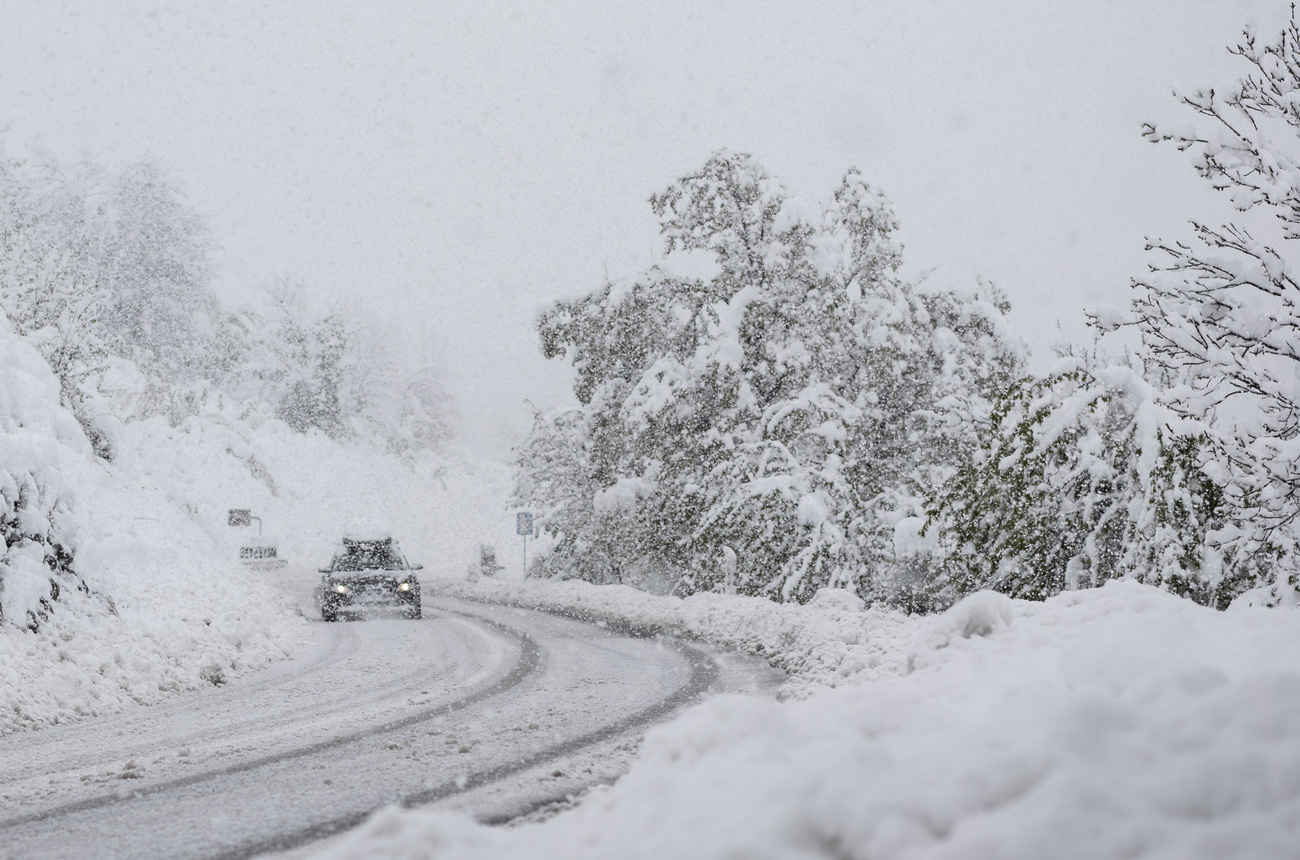Global warming to bring heavier rains to Switzerland

Researchers from Italy and Switzerland have developed a new climate change model that predicts up to 30% more precipitation during peak summer storms nationwide.
The model, developed by an international research team that includes Christoph Schär of the Swiss federal technology institute ETH Zurich, can simulate precipitation events at a resolution of two kilometres (1.2 miles), which is more precise than previous global models.
It shows that by the end of the century, rainfall during peak events of summer precipitation would increase by up to 30% – which translates to an increase of about 6% per degree of warming.
“This means it is the intensity of rainfall that will increase – even though the frequency of rainy days as well as mean [average] rainfall amounts will decrease,” Schär told swissinfo.ch on Tuesday.
The researchers believe that their results predict higher levels of precipitation in these regions than previous models have, since their model focuses more specifically on Alpine regions, where mountains are a key trigger for raincloud formation.
Engineering problems
Schär notes that such a trend could present a challenge for water management, but that his team’s research can help engineers plan for these challenges.
“In today’s climate, heavy precipitation events are quantified with what we refer to as a return period; so we say, for example, that an event of 60 millimetres of rain per day will occur on average once every 10 years,” he explains.
“One uses this kind of information in planning, for instance to build a sewer system or a bridge that will function for 100 years and withstand even floods that would happen only once in a century.”
Taking such models into account early enough could allow the government to adapt infrastructure projects accordingly when they are due for an update anyway.
“Using such information in a timely fashion can thus reduce the costs when adapting to climate change,” Schär said.
The model developed by Schär and his colleagues was used to study European Alpine regions, but could be applied to other mountain regions in the future. The research was published on Monday in the journal Nature Geoscience.

In compliance with the JTI standards
More: SWI swissinfo.ch certified by the Journalism Trust Initiative












You can find an overview of ongoing debates with our journalists here . Please join us!
If you want to start a conversation about a topic raised in this article or want to report factual errors, email us at english@swissinfo.ch.